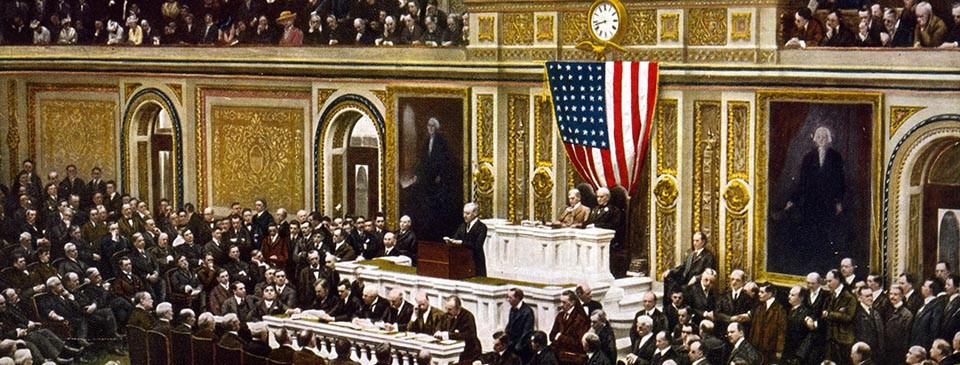
Declaration of War: April 6, 1917
Declaration of War: April 6, 1917
On April 6, 1917, Congress passed the Declaration of War. Not unlike the War of 1812, the U.S. went into war to protect shipping and the freedeom of trade while in international waters. Since the beginning of that year, 19 U.S. merchant vessels were sunk by German U-boats. To combat the U-Boats, the U.S. Navy utilized five approaches:
(1) employing destroyers, converted yachts, cruisers, submarine chasers, and other suitable craft to serve as patrol vessels and convoy escorts.
(2) the organization and administration of transport service to carry an American Expeditionary Force to Europe and a merchant fleet to support it.
(3) the reinforcement of the British Grand Fleet with a few American battleships; the others to be used for training personnel.
(4) the creation of naval aviation squadrons to assist in patrol and escort duties, while also conducting anti-submarine warfare operations.
(5) the development of anti-submarine measures, which included a mine barrage across the North Sea and the installation of sound detection devices on destroyers, submarines, and submarine chasers.
On April 19, the U.S. Naval Armed Guardsman onboard SS Mongolia engaged and damaged a German U-boat. This action, utilizing the after 6" gun, N.263, was the first between U.S. Navy personnel and Germany after the declaration of war.
Image: LC-USZC4-10297: President Woodrow Wilson addressing Congress to declare war on Germany, April 2, 1917. Courtesy of the Library of Congress.



